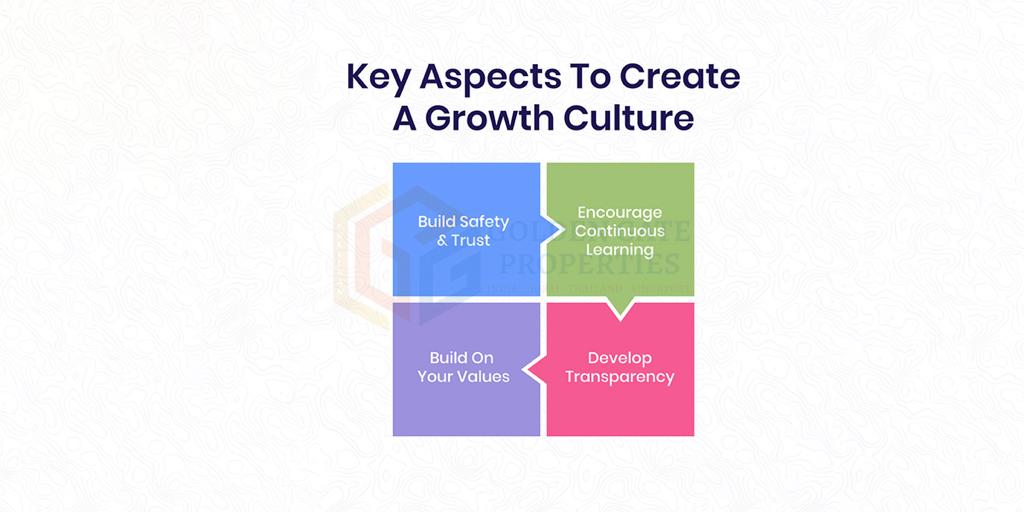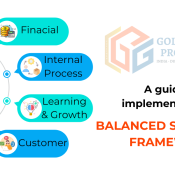
Growth Culture: How To Create One That Works
In a world where the continuous pursuit of high performance frequently results in dread, anxiety, and a suffocating work atmosphere, it’s time to shift our attention to prioritising a growth culture.
“A performance-driven culture often exacerbates people’s fears by creating a zero-sum game in which people are either succeeding or failing and winners quickly get weeded out from losers.”
However, developing high-performing teams does not require pushing harder or scrutinising every indicator. It is about cultivating a growth mentality that creates an environment in which people may flourish, develop, and learn without fear of failure.
In reality, establishing a culture where people feel comfortable and are permitted to learn via experimentation improves corporate success.
In this article, we’ll look at four key qualities of establishing a growth culture that encourages results while avoiding the negative consequences of a performance-obsessed culture, as well as real-world examples from successful businesses.

1. Increase organisational safety and trust
Create a safe atmosphere.
Safety is more than simply bodily well-being; it also includes psychological safety.
Fear in the workplace prevents a development culture from flourishing. Fear prevents people from taking measured risks or moving outside of their comfort zones.
When people lack a sense of safety, they prioritise self-protection. They conceal their blunders to avoid sanctions or job instability, hindering the organisation from learning from its mistakes and avoiding future dangers.
The organization’s success becomes meaningless in their everyday work life, and workers want to get on with their jobs, keep under the radar, and avoid drawing attention to themselves.
The lack of psychological safety is detrimental to the organizational culture.
Cultivate trust from the beginning
In a growing culture, trust is unavoidable.
It’s a two-way street that begins with leadership and spreads across the organisation:
- Leaders set the tone by creating a safe atmosphere in which their team members may share difficulties and get help.
- Team members contribute to this trust culture by providing their assistance not just laterally but also upward, with the simple query, “How can I help?”
- The movement of confidence in both directions, up and down the organisational hierarchy, is an important driver for openness.
At Golden Gate Properties, we live by the mantra that “Trust is given, not earned.”
Lead by example.
Leaders play a critical role in creating a climate in which everyone feels comfortable making errors and taking measured risks.
One successful approach to do this is for executives, particularly the C-Suite, to openly admit their own mistakes. When leaders and role models reveal their vulnerabilities, they inspire others to do the same.
Hearing their leader say, “I don’t know,” or “I need help with this. What are your ideas?” or “This is on me. I made a mistake,” reassures people that these behaviours are not condemned.
Embrace failure to learn and adapt.
To foster creativity, change your attitude toward failure. Rather than obsessing over previous mistakes, concentrate on learning from them. Even if a mistake is costly, consider it a useful lesson.
In a growth-oriented culture, leadership not only tolerates failure but actively promotes many tries until the goal is met. To promote innovation, go beyond allowing failure; the true benefit of a growth culture is in encouraging ongoing experimentation and ingenuity.
Treat mistakes as lessons to ignite innovation.
Success Story.
Costco is well-known for its distinct culture and excellent staff retention rates, as well as competitive compensation, exceptional industry perks, and increased job satisfaction.
Less well recognised is the company’s sustained financial stability since its first public offering in 1986. It has consistently beaten the S&P since 2010.
James Sinegal, the co-founder of Costco, and his successor, Craig Jelinek, fully believe in long-term investment via employee well-being. With a continuous turnover rate below 10%, it’s apparent they made the correct decision.
2. Encourage continuous learning.
Empower your folks.
Fear frequently causes individuals to rely significantly on safety rules.
Rules have a role in standard operations, but they become less important in times of crisis or unforeseen events. In certain cases, you want your staff to be free to find exceptions and act in the best interests of their organisation and consumers.
Leaders should trust their team to know when it’s appropriate to bend or break the rules.
Encourage experimenting!
Encouraging experimentation within your team is critical to promoting innovation and progress.
Here are some concrete strategies that encourage experimentation:
- Allocate time and resources: Give your team dedicated “innovation time” or set aside a piece of the budget for experimental initiatives.
- Create a safe workplace in which measured risks are not only accepted but actively encouraged.
- Recognise and Celebrate: Recognise and appreciate both the triumphs and the lessons acquired throughout experimentation.
- Encourage sharing. Encourage open communication and the exchange of discoveries among team members to promote continual development and concept refining.
Encourage a culture of continuous learning by viewing every experiment, whether successful or not, as an opportunity for growth and development.
Encourage decision-making.
Encouraging decision-making is more than simply empowering your team; it also entails evaluating your organization’s structure.
Traditionally, firms have focused on swiftly moving information from front-line employees to decision-makers to ensure that the relevant people get the data they need to make educated decisions.
The issue with this strategy is that many circumstances encountered by front-line staff are time-sensitive. By the time information reaches decision-makers and judgements are made, it is typically too late.
Consider the following: your teams make decisions every day. So, what if we switched things up?
Instead of just relaying information, provide training and empower your team to make decisions, and take charge of situations, problems, and solutions.
Success Story.
Bob Chapman altered the course of the HayssenSandiacre firm by transforming its culture. Though neither large nor showy, the adjustments were quite effective in expressing simply one thing to its employees: management trusts them.
The bells that signalled break periods and work resumes disappeared. Time clocks for punching in and out were removed. And the security cages surrounding spare components were removed.
These consistent expressions of confidence triggered a significant transformation in the company’s culture. This cultural revolution also resulted in a revenue turnaround, almost tripling it over time.
3. Develop Transparency
Strive for complete visibility!
Clear visibility is critical for informed decision-making, continual improvement, and innovation on the path to organisational progress. Centralised observability is a strong tool that provides a full perspective of operations while also allowing for real-time monitoring and data-driven decision-making.
Striving for comprehensive visibility entails building an atmosphere where information flows easily, fostering open communication, and ensuring that all team members have access to the required data.
Striking a balance between bottom-up and top-down approaches ensures that transparency serves individual needs and overarching organizational goals.
Implement ongoing feedback.
Continuous feedback is another crucial strategy for increasing openness while also guiding progress, refining decisions, and sparking creativity.
Cultivating an environment of continuous feedback guarantees that every voice is heard and helps not just the organization’s progress, but also the personal development of its employees.
Establish a feedback loop that embraces input from all levels of the organization, from frontline employees to leadership.
Develop cross-functional teamwork.
Cross-functional cooperation is more than just teams working together; it’s about breaking down barriers, creating understanding, and aiming for common goals. When teams work smoothly across functions, they may synchronise their efforts, share their knowledge, and increase transparency.
What was the result? A considerable increase in efficiency and effectiveness. Projects progress quickly, and choices are made with a full understanding of the organisation’s needs and capabilities.
Promote cross-functional collaboration by actively supporting inter-departmental teamwork, aligning goals, and providing the necessary tools and resources for seamless cooperation.
Success Story.
When Allan Mulally took over as CEO of Ford in 2006, he found a business on the verge of bankruptcy, surrounded by a culture of fear. Transparency was a rare commodity; employees were hesitant to express problems for fear of penalties.
Mulally’s game-changing action was to recognise and praise a senior management who bravely raised a red flag, rather than penalising them.
This strategy progressively built confidence among the team, allowing top management to openly discuss critical concerns. The consequent transparency brought the workforce together, allowing them to give critical assistance that eventually saved the organisation.
4. Build on your values.
Cultivate your preferred ideals.
Organisational values are essential to a company’s culture and success. They influence behaviours, affect relationships, decisions, and contributions, and provide an ethical and moral foundation.
Creating a values-based culture consists of two parts:
- Reward-aligned behaviours: Recognise people who embody your intended ideals, emphasising that performance isn’t the only priority.
- Condemn conflicting behaviour: Respond swiftly to opposing acts to demonstrate a strong commitment to your organization’s principles.
Reward the behaviours you advocate and condemn the opposites fast.
Locate your cultural stars.
Every organisation has individuals who exceptionally exemplify the company’s principles.
Identify these people, not necessarily the top achievers, but those who truly embody the company’s ideals. They are your cultural icons, the people you want others to imitate. These ambassadors set the benchmark for acceptable behaviour inside the organisation.
Leadership should recognize these individuals and showcase their behaviours, creating role models for others to emulate.
Success Story.
Patagonia, an American apparel brand, exhibits a dedication to its basic ideals that extend far beyond the scope of corporate responsibility. One of these ideals is to “cause no unnecessary harm.”
In an astonishing demonstration of integrity, Patagonia discovered significant infractions in its second-tier supplier chain. Taking proactive steps, they committed to improving the circumstances of their suppliers.
This constant attention to their ideals in external affairs exemplifies how Patagonia handles its workers with the same degree of honesty and commitment.
Elevate Your Growth Culture With GGP
GGP is your key partner for building and fostering a growth culture.
As the world’s #1 strategy execution plan, GGP helps businesses connect siloed metrics, initiatives, and investments with their realized performance.
Our plan enhances your organization’s decision-making and ensures full visibility and cross-functional collaboration:
- Centralized business observability: Gain a comprehensive view of your organization’s operations by real-time data monitoring, empowering data-driven decision-making.
- Full visibility for organizational alignment: Foster a culture of transparency where information flows freely, ensuring all team members have access to the data they need, enabling adaptability, innovation, and growth.
- Effective cross-functional collaboration: Achieve seamless inter-departmental teamwork, aligning efforts, sharing expertise, and enhancing transparency, resulting in increased efficiency and effectiveness.
Discover the power of GGP! Connect with us! GGP’s in-house strategy execution experts.




Here, I’ve read some really great content. It’s definitely worth bookmarking for future visits. I’m curious about the amount of work you put into creating such a top-notch educational website.
Thank you Do keep reading our upcoming blogs
allegheny county real estate I am truly thankful to the owner of this web site who has shared this fantastic piece of writing at at this place.
Thank you Do keep reading our upcoming blogs
allegheny county real estate I am truly thankful to the owner of this web site who has shared this fantastic piece of writing at at this place.
Thank you Do keep reading our upcoming blogs